The best fast Fords that Brits got but America didn’t
From the Model T to the all-electric Mustang Mach-E, with the Model A, Mustang and F-Series in between, 103-years-old-today Ford has an illustrious history alright. But British fans have a very different perspective thanks to these awesome Fast Fords which never made it across the Atlantic.
With trucks and SUVs coming late to the party it’s Ford’s hatchbacks, sedans and coupes that have always got Blue Oval enthusiasts going in the U.K.
Lotus Cortina

It all began with what these days would be called a collab. In 1963 Ford x Lotus turned the humble Cortina (top) into an unbeatable tin-top racer and a rapid road car. Power came from a Cosworth-tuned 1.6-liter twin-cam Kent engine, driving via a close-ratio gearbox also used in the Lotus Elan. The suspension had a major overhaul and Girling brakes were fitted. Lotus badges and the iconic green-on-white paint scheme were added. Initially 1000 were ordered for homologation, but over 3000 were built before it was replaced in 1967. A very small number did actually make it over to race in the United States, but you wouldn’t have easily found one in your local Ford dealer.
Escort RS1600
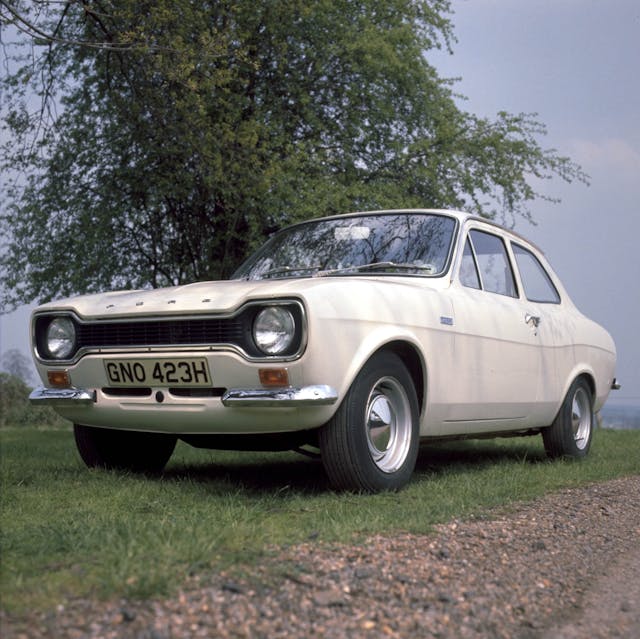
RS stands for Rally Sport and the first time these famous initials appeared was on the 1970 Mark I Escort RS1600. The little car won the epic London to Mexico World Cup Rally in the hands of flying Finn Hannu Mikkola and Ford celebrated by releasing the Escort Mexico with its Crossflow engine. Further developments included the legendary “Belt Drive A Series” or BDA engine, plus the more reliable RS2000 with its Pinto-derived motor.
Fiesta XR2

Blue-collar Ford has always democratized speed. In 1980s Britain, nothing did more for that cause than the Fiesta XR2. With a 1.6-liter Kent Crossflow engine, sporty round headlights to replace the standard car’s square units and plenty of black plastic trim, the XR2 was the car every working class lad wanted. And one that many could afford.
RS200
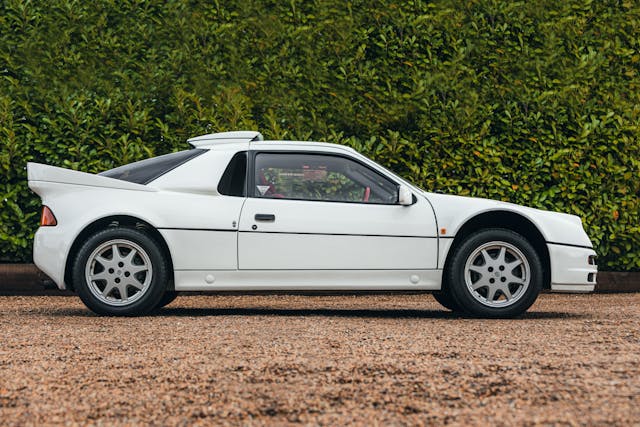
The Group B rally era saw some incredible cars from the supercharged and turbocharged Lancia Delta S4 to the MG Metro 6R4, whose V-6 engine would later appear in the Jaguar XJ220. Ford didn’t even attempt to base the RS200 on an existing model, instead creating the ultimate mid-engined rally weapon, wrapped in a fetching Ghia-designed body. As the name suggests, just 200 were built.
Sierra RS500 Cosworth
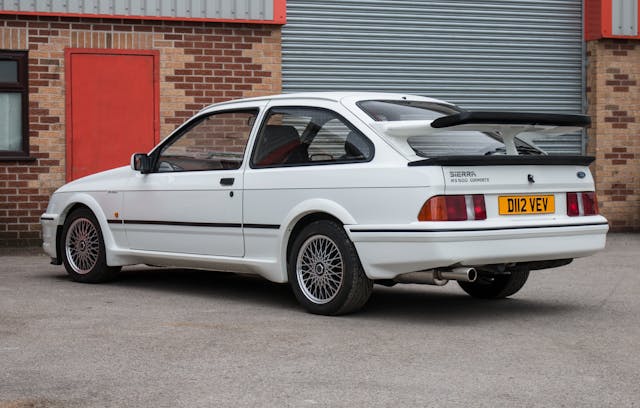
Launched in 1985 the Sierra Cosworth was Ford’s answer to the BMW E30 M3—a touring car racer with 5000 road versions built to comply with homologation rules. With a two-liter turbocharged, twin-cam 16-valve engine pumping out 180 hp on the road and 300 hp in race trim, it needed some serious aerodynamics to keep it planted. Hence the crazy rear wing. Just 500 models were sent to Aston Martin Tickford where they received an upgraded Garrett AiResearch turbo and bigger intercooler along with improved fuel flow and cooling systems which boosted power to 224 hp. These are the ultimate Cossies.
Escort RS Cosworth
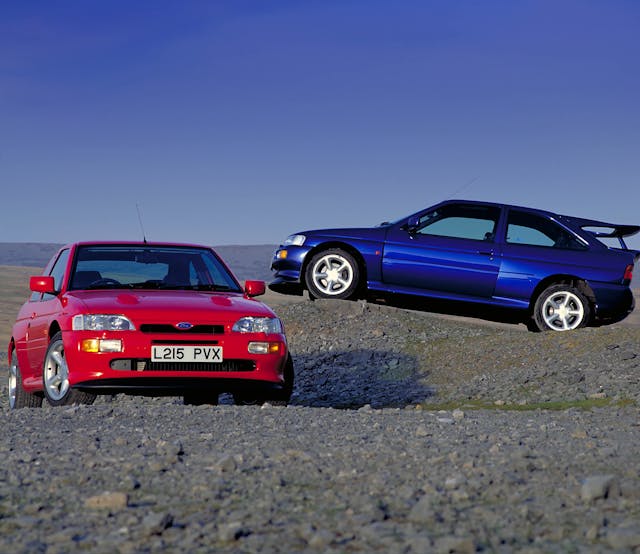
As part of the development program Ford introduced a 4×4 version of the Sierra Cosworth and it was this powertrain that found its way into the smaller and more nimble Escort to turn it in a rally hero in 1992. The road version quickly gained a reputation for being a hooligan’s car, which is one of the reasons British auto scribe Jeremy Clarkson loved his. Unfortunately it was rather easy to steal, which is why Clarkson didn’t have it for long.
Racing Puma

For the launch of its pretty Puma coupe Ford cut together the famous Bullitt car chase, replacing Steve McQueen’s Mustang with the new car. The first Pumas couldn’t really live up to the hype so Ford turned once again to Tickford to create the Racing Puma. It boasted a wider track, flared wheel arches, and 17-inch wheels. Inside were Sparco bucket seats and aluminum pedals. The 1.7-liter engine gained a modest hike in performance, but the Racing Puma was all about corner speed, with immense grip and a playful chassis.
Mondeo ST200

The Mondeo took over where the Sierra left off as the family man’s motor. But it also had to live up to the Sierra’s reputation as a racer, so a variety of more muscular Mondeos were produced, but the 1999 ST200 is the king. Powered by a 2.5-liter V-6 with over 200 hp it wasn’t just speedy in a straight line, it had the same attention paid to its chassis as the two cars above. For a big front-wheel-drive sedan, it was amazing.
SportKA

Ford’s diminutive KA was a budget city car that was a hoot to drive, but it was hobbled with a weedy 1.3-liter engine at its launch in 1996. In 2003 Ford made amends with the introduction of the SportKA and its 1.6-liter motor. Like the Racing Puma it got a widened track and extended arches which gave it a more purposeful look and, like the Racing Puma, it was brilliant in the bends.
2002 Focus RS

When the Focus came along to replace the legendary Escort it also had big boots to fill. So you can only imagine the expectation that was placed on the 2002 Focus RS. Unlike the Escort Cosworth, the Focus was front-drive only and had enthusiasts worried. However, by mating the two-liter turbocharged Duratec engine to a Quaife ATB limited-slip differential the Ford engineers worked magic. It managed torque-steer superbly and had the chassis balance that meant a new legend was born. Of course it would be 2016 before the Focus RS finally made it to the U.S., proving good things do come to those who wait.
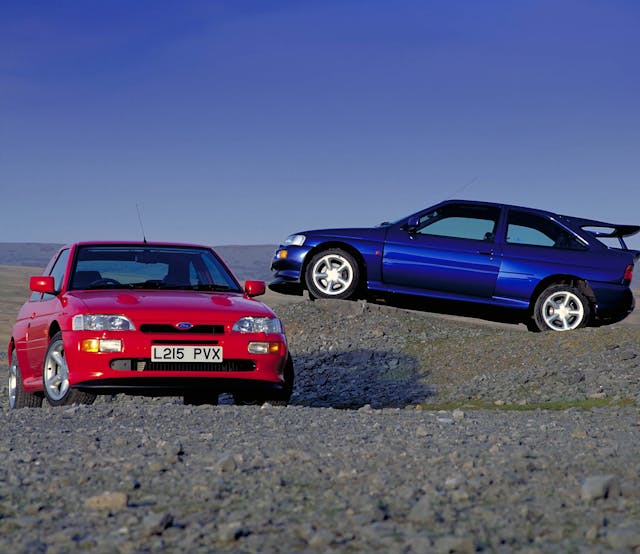


Really? No Capri? Le sigh.